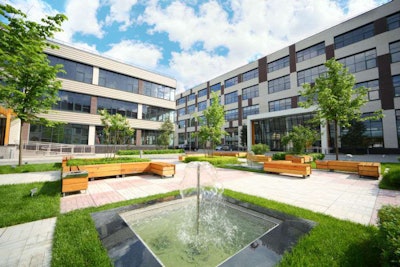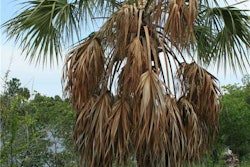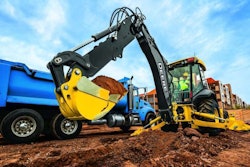
This is especially true when dealing with trees planted near commercial buildings. While landscaping for homes comes with its own set of challenges, landscaping for businesses is no walk in the park.
Commercial businesses can be some of the greatest assets to the landscaping industry because they are interested in investing in attractive looks for their campuses. This gives you the ability to be creative in design and lets you encourage more green looks in the realm of big business.
With commercial landscapes, however, you have to think about exposures, the public’s use of the site and vehicular traffic. Maintaining trees for commercial landscapes can take a bit more planning as well because the trees must be irrigated, cared for and pruned often in places where there is high public traffic and in parking lots.
It doesn’t matter if you give your customer their dream look, if within a few weeks the exotic trees they wanted have wilted or died. Finding plants that can handle the temperatures and locations of whatever area you service is the key to pleasing customers and giving them more bang for their buck.
We’ve listed a few suggestions of trees that do well in the commercial setting, so take a peek and see if these match up to what your customers are asking for.
Temperate regions
Shade trees are very popular in temperate parts of the country, and one of the most popular types is the pistache (Pistacia chinensis). These typically have slow to moderate growth and can reach anywhere from 30-60 feet tall with an almost equal spread. These add great colors to the landscape in the fall and boast bright orange and red leaves with an occasional appearance of yellow. It can tolerate a pretty wide range of conditions and, when it’s mature, is drought tolerant. It’s been recommended as a reliable tree for parking lots and street side plantings. They are recommended for USDA Hardiness Zones 6-9.
Evergreen trees help give landscapes a nice presence of greenery long term, and one of the most popular is the southern live oak (Quercus virginiana). They have moderate to fast growth and can, in time, reach between 40 and 80 feet tall with a heavy limbed crown that can spread twice as wide.
They have a long life span and thrive best in rich, moist, deep soil. It’s also said to be the most attractive evergreen oak in hot interior climates. They are recommended for USDA Hardiness Zones 7-10.
Southwest desert and arid regions
The palo verde tree (Parkinsonia aculeate) is a tough and presumably trouble-free desert tree. They are valued for their shade, colorful bark and floral display. They are a good attractant for birds, and usually only need to be pruned to enhance their form. They provide lightly filtered shade and are recommended for USDA Hardiness Zones 6-9.
The mesquite trees (Prosopis spp.) are among some of the most useful and resilient of the desert trees. Their roots can travel long distances in search of water, and they can also adapt to lawn water. They can grow up to 30 feet tall with adequate watering, and they boast a spreading canopy that can reach about 30 feet wide. A bit of pruning is needed for this type, but it should only be done to remove dead or broken limbs. They are recommended for USDA Hardiness Zones 6b-9.
Palm trees
For customers who want to add a bit of the tropics to their scene, these two popular palms can lend a hand.
Mexican fan palms (Washingtonia robusta) are best suited for larger properties, parkways and avenues, and they can grow close to 100 feet high and 10 feet wide. Their trunks are slightly curved and boast a bright green head of foliage. They are recommended for USDA Hardiness Zones 8-11.
Date palms (Phoenix canariensis) have heavy, large trunks that can grow to almost 60 feet tall. Their arched fronds form a crown that stretches to 50 feet, and they require regular watering. They are best planted in large spaces, along wider streets and in parks. They are recommended for USDA Hardiness Zones 8-11 However in Texas and Florida, they are at risk of contracting Texas Phoenix palm decline.










